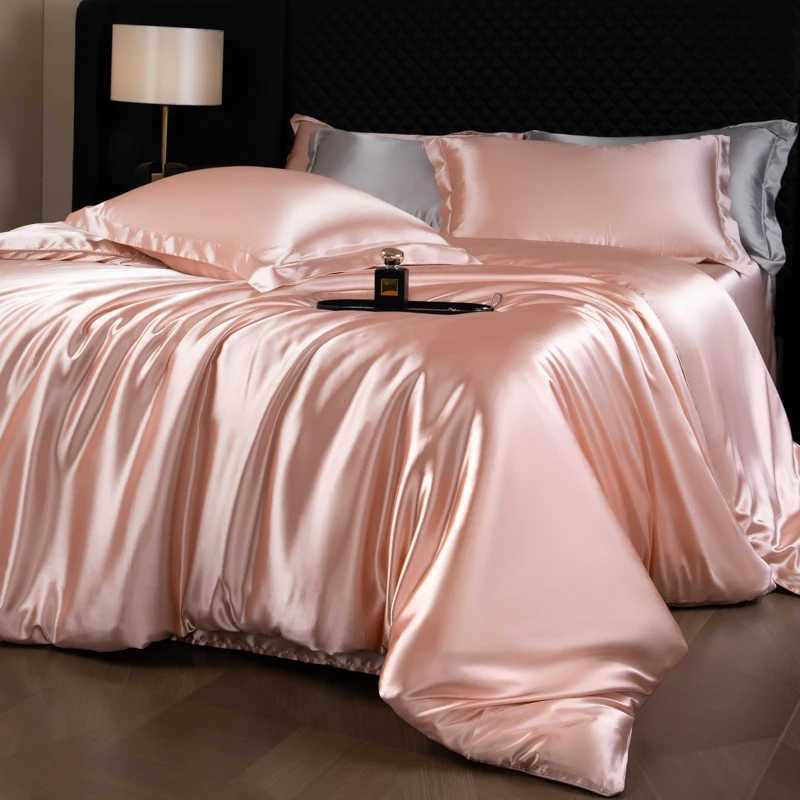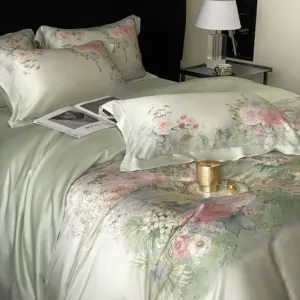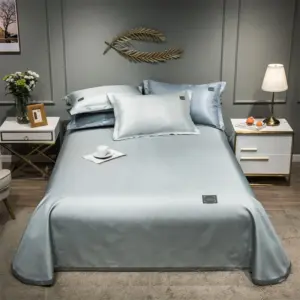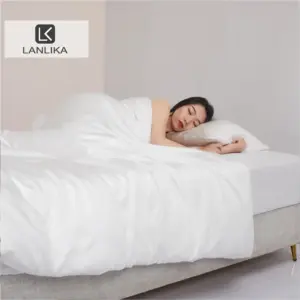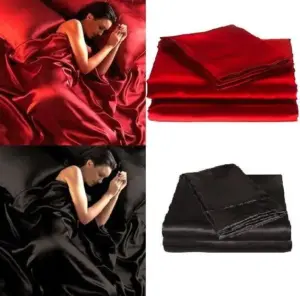Introduction to Silk and Vegan Alternatives
Traditional silk is a natural protein fiber primarily produced by silkworms, specifically the Bombyx mori species. This luxurious material has been treasured for thousands of years for its exceptional smoothness, luster, and comfortable feel. On the other hand, “vegan silk” refers to a variety of plant-based or synthetic alternatives designed to mimic silk’s desirable properties without using animal products.
Silk has long been considered the epitome of luxury in textiles, adorning royalty and the wealthy throughout history. However, as consumer awareness about production methods has grown, so has the market for ethical alternatives that offer similar benefits without animal involvement. Today, these vegan options range from plant-derived cellulose fibers to advanced synthetics.
Understanding the traditional silk vs vegan silk comparison helps consumers make choices aligned with their personal values, practical needs, and budget considerations. At Sanctuary Soft, we recognize the importance of offering both premium silk products and high-quality vegan alternatives to meet diverse customer preferences.
This comprehensive comparison will explore the differences between these materials across several dimensions: their origins, physical properties, environmental impact, and practical considerations for everyday use.
Understanding Traditional Silk
Traditional silk is a natural protein fiber comprised primarily of fibroin, produced by the larvae of the Bombyx mori moth, commonly known as the mulberry silkworm. This remarkable material comes from a process that has remained largely unchanged for thousands of years.
The sericulture process involves several key steps:
1. Cultivation of silkworms on mulberry leaves until they reach maturity
2. The silkworms spin cocoons made of a single continuous silk filament (which can reach up to 1,000 meters in length)
3. The cocoons are harvested and typically placed in hot water to kill the pupae inside and dissolve the sericin (silk gum) that binds the filaments
4. The filaments are then carefully unwound and several strands are twisted together to create silk thread
5. These threads are woven or knit into fabric
What makes silk such a highly desirable textile are its exceptional properties:
- Remarkable smoothness with a natural sheen and lustrous appearance
- Natural temperature-regulating properties that keep you cool in summer and warm in winter
- Impressive moisture-wicking ability that can absorb up to 30% of its weight in moisture without feeling damp
- Surprising strength (silk fiber is stronger than a steel filament of the same diameter)
- Lightweight nature combined with excellent durability when properly maintained
- Naturally hypoallergenic qualities that resist dust mites, mold, and fungi
- A distinctive premium feel and elegant drape that’s immediately recognizable
Premium silk quality is often measured in momme weight, with 19-25 momme representing the ideal balance of luxurious feel and durability. Different silk fabric types offer varying characteristics, from the crisp lightness of habotai to the textured richness of dupioni.
For those seeking true luxury bedding, mulberry silk bedding sets offer the highest quality experience, with their exceptional softness, breathability, and temperature-regulating properties making them ideal for year-round comfort.
What Makes Silk Non-Vegan: The Ethical Consideration
The primary reason traditional silk is not considered vegan is the harvesting process involves killing silkworms before they emerge from their cocoons. In conventional silk production, the cocoons are placed in boiling water or heated ovens with the silkworm pupae still inside. This occurs at the metamorphosis stage, just before the moths would naturally emerge.
This method is used because allowing the moths to emerge naturally would require them to secrete an enzyme that cuts through the silk fibers, significantly reducing the quality and continuous length of the silk filament. The scale of this practice is considerable—producing just one pound of silk requires approximately 3,000 silkworms.
This ethical concern has become increasingly important to many consumers who prefer products that avoid animal harm. The understanding that mulberry silk is not vegan-friendly has driven significant innovation in alternative materials that can provide similar properties without the ethical concerns.
The desire for cruelty-free options has been a primary motivating factor behind the development and growing popularity of vegan silk alternatives. While some consumers prioritize these ethical considerations above all else, others weigh them alongside factors like performance, environmental impact, and cost when making purchasing decisions.
Understanding Vegan Silk: Types and Properties
Vegan silk refers to a diverse range of fabrics designed to mimic the desirable qualities of traditional silk without using animal products. Rather than a single material, “vegan silk” is an umbrella term encompassing multiple alternatives with varying properties and production methods.
The most common types of vegan silk alternatives include:
Cupro: Derived from cotton linter (the fine, silky fibers surrounding cottonseed), Cupro offers a silky drape and smooth texture. Its production involves dissolving the cellulose fibers in a cuprammonium solution, then extruding them through spinnerets to create filaments. The resulting fabric has excellent breathability and temperature-regulating properties.
Lyocell/Tencel™: Made from wood pulp, typically eucalyptus or bamboo, through an environmentally responsible closed-loop production system. Tencel™ is particularly noted for its exceptional sustainability profile, silky feel, and impressive moisture-wicking capabilities—sometimes even surpassing traditional silk in this regard.
Modal: Created from beech wood pulp, Modal offers exceptional softness and resistance to shrinkage. It’s known for maintaining its shape and color brilliance through repeated washing, making it both practical and luxurious.
Bamboo Lyocell/Viscose: While both use bamboo as a raw material, their processing methods differ significantly. Bamboo lyocell uses the more environmentally friendly closed-loop system, while bamboo viscose typically involves more chemicals. Both offer silky textures with excellent draping qualities.
Soy Silk: Made from the protein residue of soybean production, soy silk has a protein structure more similar to actual silk than cellulose-based alternatives. This gives it a remarkably silk-like feel with good moisture absorption.
Other plant-based options: Innovative materials like pineapple silk (Piñatex), banana silk, and lotus silk represent emerging alternatives with distinctive properties and production methods.
Synthetic options: Materials like polyester satin provide budget-friendly silk alternatives but generally offer less breathability and fewer natural properties than plant-based options.
The vegan silk sustainable production process varies significantly between these materials, affecting their environmental footprint and performance characteristics. While all these alternatives share some silk-like qualities such as drape, softness, and shine, they each have unique properties that make them better suited to different applications.
For those interested in experiencing vegan alternatives without sacrificing luxury, vegan silk bedding options provide excellent comfort with cruelty-free peace of mind.
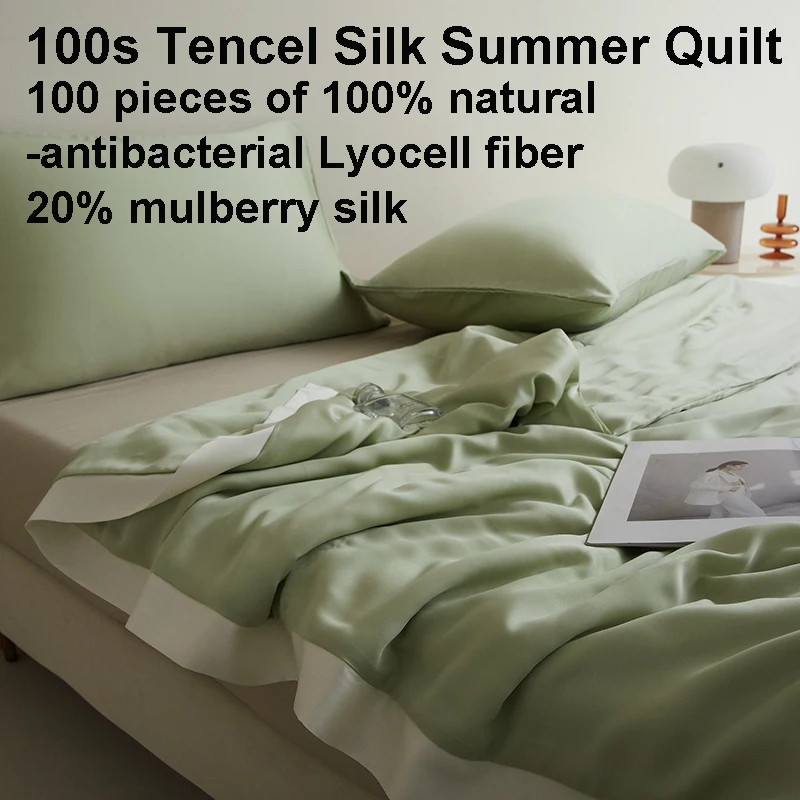
Key Differences: Silk vs. Vegan Silk – Comparative Analysis
To clearly understand how traditional silk compares to vegan alternatives, this comprehensive comparison table highlights the key differences across multiple factors:
| Feature | Traditional Silk | Vegan Silk Alternatives |
|---|---|---|
| Origin/Source | Animal-derived (silkworms) | Plant-based/Synthetic (varies by type) |
| Material Composition | Natural protein fiber (fibroin) | Primarily cellulose fibers or synthetic polymers |
| Production Process | Sericulture (silkworm breeding, cocoon harvesting) | Chemical/mechanical processing of plant materials |
| Ethical Consideration | Not cruelty-free (involves killing silkworms) | Cruelty-free (no animal products or harm) |
| Feel & Texture | Exceptionally smooth, distinct luxurious feel | Can closely mimic silk, varies by type |
| Temperature Regulation | Excellent natural thermoregulation | Varies (Lyocell/Tencel excellent, synthetics poor) |
| Breathability | Highly breathable | Varies by type (plant-based generally good) |
| Moisture Management | Natural moisture-wicking | Plant-based good, synthetics limited |
| Durability | Very durable with proper care | Generally good, varies by type |
| Hypoallergenic Properties | Naturally hypoallergenic | Often hypoallergenic, especially plant-based types |
| Care Requirements | Delicate, typically hand wash/dry clean | Generally easier care, often machine washable |
| Cost | Generally higher | Varies; often more affordable than silk |
| Biodegradability | Fully biodegradable | Plant-based types biodegradable, synthetics not |
One of the most significant differences between traditional silk and vegan alternatives lies in their molecular structure. Silk is a protein fiber, while most vegan alternatives (except soy silk) are cellulose-based. This fundamental difference affects how the fabrics interact with moisture, regulate temperature, and feel against the skin.
The production processes also differ substantially. Traditional silk requires raising silkworms, a resource-intensive process requiring controlled environments and considerable manual labor. Vegan alternatives typically involve industrial processes to transform plant materials into fibers, with varying degrees of chemical processing and environmental impact.
For consumers seeking the most comparable experience to traditional silk, materials like Tencel™ Lyocell and high-quality Cupro tend to offer the closest approximation in terms of drape, sheen, and feel. However, the silk vs vegan silk comparison reveals that no single alternative perfectly replicates all of silk’s distinctive properties.
Performance Factors: How Do They Compare?
When evaluating silk against vegan alternatives for everyday use, several performance factors become particularly important:
Sleep Comfort and Temperature Regulation
Traditional silk excels in natural temperature regulation due to its protein structure that creates micro-air pockets that trap warm air in cold conditions while allowing heat to dissipate in warm weather. This makes silk bedding comfortable year-round. Among vegan options, Tencel/Lyocell offers comparable temperature regulation through efficient moisture management, while synthetic alternatives typically perform poorly in this area.
Skin and Hair Benefits
Silk’s extremely smooth surface creates minimal friction against skin and hair, which helps prevent sleep creases, reduce hair breakage, and preserve skincare products. The fabric’s smooth protein structure has a friction coefficient of just 7.4%, significantly lower than cotton (30%). Many plant-based alternatives offer similar benefits, with Cupro and Lyocell providing exceptionally smooth surfaces that minimize friction.
Durability and Longevity
With proper care, traditional silk can last for many years—even decades. Vegan alternatives vary widely in durability: plant-based options like Tencel and Modal offer good longevity, while some cheaper synthetic options may pill or lose their luster more quickly. The specific weave pattern and fabric weight also significantly impact durability regardless of material type.
Appearance Retention
Silk naturally maintains its luster and appearance with proper care. Plant-based vegan options generally maintain their appearance well, though some may be more prone to wrinkling. Synthetic alternatives can lose their sheen over time, particularly with frequent washing.
Sensory Experience
The tactile experience of true silk—its distinctive combination of smoothness, weight, and drape—is challenging to replicate exactly. However, high-quality vegan alternatives like Cupro and Tencel provide a remarkably similar feel that many consumers find equally satisfying for practical purposes.
Understanding the pros and cons of silk and vegan silk helps consumers match materials to their specific needs, whether they prioritize maximum durability, optimal skin benefits, or superior temperature regulation.
Environmental Impact: Sustainability Comparison
The environmental footprints of traditional silk and vegan alternatives differ significantly across several key factors:
Water Usage
Traditional silk production requires significant water both for mulberry tree cultivation and the silk processing. However, some plant-based vegan alternatives can be even more water-intensive—cotton-derived Cupro, for example, comes from one of the most water-demanding crops. In contrast, Lyocell/Tencel production is notably water-efficient, using up to 20 times less water than cotton processing.
Land Use Requirements
Sericulture requires land for mulberry cultivation, though this can be done on marginal lands not suitable for food crops. Most plant-based alternatives require agricultural land, with varying degrees of efficiency. Bamboo stands out for its minimal land requirements and ability to grow on non-agricultural land.
Chemical Processing
Traditional silk processing typically uses fewer chemicals than many vegan alternatives, primarily requiring hot water for degumming. Most plant-based alternatives require chemical solvents to transform cellulose into fibers, though the environmental impact varies dramatically depending on the specific process. Closed-loop systems like those used for Tencel recapture and reuse up to 99% of these chemicals, minimizing environmental impact.
Biodegradability
Traditional silk is fully biodegradable, typically decomposing within 1-5 years in appropriate conditions. Plant-based vegan alternatives like Lyocell, Modal, and Cupro are also biodegradable, though decomposition times vary. Synthetic alternatives like polyester satin are not biodegradable and can persist in the environment for hundreds of years.
Energy Consumption
Both traditional silk and vegan alternatives require energy for production, though in different forms. Silk production is often labor-intensive but may use less industrial energy, while plant-based alternatives typically require more mechanized processing.
For those prioritizing sustainable options, bamboo silk sheets offer an excellent balance of environmental responsibility and performance, with bamboo’s rapid growth rate and minimal resource requirements making it an increasingly popular choice.
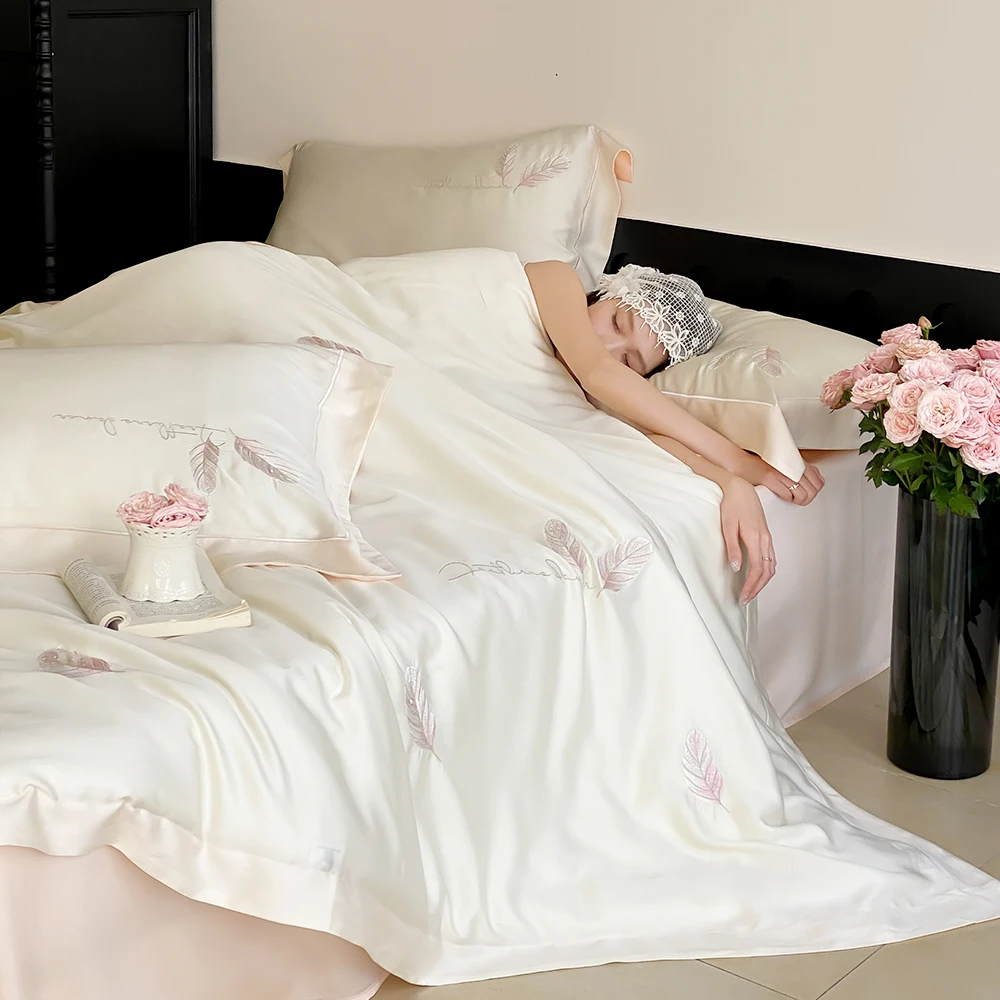
Making the Right Choice: Considerations for Different Uses
Selecting between traditional silk and vegan alternatives depends significantly on the specific application and your personal priorities:
Bedding Considerations
For bedding, temperature regulation and skin-friendly properties are typically top priorities. Traditional silk excels in these areas, making it ideal for temperature-sensitive sleepers and those with sensitive skin. Among vegan options, Tencel/Lyocell and bamboo-derived fabrics offer comparable benefits, with excellent moisture management and smooth surfaces. Synthetic alternatives generally perform poorly for temperature regulation but may be more budget-friendly and easier to care for.
Clothing Applications
For clothing like blouses, dresses, and lingerie, drape and feel against the skin become particularly important. Traditional silk’s unparalleled drape creates a distinctive flowing silhouette that’s difficult to replicate exactly. However, Cupro and high-quality Modal provide remarkably similar aesthetic results. Consider how the garment will be used and cared for—silk requires more delicate handling, while many vegan alternatives can withstand regular machine washing.
Hair and Skin Care
For pillowcases and accessories meant to benefit hair and skin, the smoothness of the surface is paramount. Traditional silk’s extremely low friction coefficient makes it excellent for reducing hair breakage and preventing sleep creases. Cupro and Tencel offer comparable benefits in this regard, with surfaces nearly as smooth as silk. These alternatives may actually be preferable for those with very oily skin, as they’re often easier to clean regularly.
Your local climate should also factor into your decision. In humid environments, the moisture-wicking properties of both traditional silk and plant-based alternatives like Tencel become particularly valuable. In very dry climates, silk’s ability to maintain optimal moisture levels can help prevent static electricity and skin dryness.
When choosing silk or cruelty-free options, consider your personal values alongside practical needs. For those with extremely sensitive skin, the most hypoallergenic fabric choices typically include both traditional silk and several plant-based vegan alternatives, while synthetic options may cause irritation for some individuals.
100% Silk Sheets, Green Silk Sheets, King Size Silk Bedding Set, Mulberry Silk Bedding Sets, Queen Size Silk Bedding Set
Price range: $1,246.21 through $1,615.22 Select options This product has multiple variants. The options may be chosen on the product pageEucalyptus Silk Bedding Sets, Eucalyptus Silk Sheets
Price range: $360.24 through $393.60 Select options This product has multiple variants. The options may be chosen on the product page- Price range: $267.82 through $306.55 Select options This product has multiple variants. The options may be chosen on the product page
Bamboo Silk Sheets, Cooling Silk Sheets
Price range: $130.76 through $177.80 Select options This product has multiple variants. The options may be chosen on the product page100% Silk Sheets, King Size Silk Bedding Set, Mulberry Silk Bedding Sets, Queen Size Silk Bedding Set, White Silk Sheets
Price range: $1,000.79 through $1,351.42 Select options This product has multiple variants. The options may be chosen on the product pageBamboo Silk Sheets, Queen Size Silk Fitted Sheet
Price range: $230.24 through $297.88 Select options This product has multiple variants. The options may be chosen on the product page
Common Misconceptions About Silk and Vegan Silk
Several misconceptions can lead consumers astray when comparing silk and vegan alternatives:
Misconception: “Satin is a type of silk”
Fact: Satin is actually a weave pattern, not a specific material. Satin-weave fabrics can be made from silk, polyester, nylon, rayon, or other fibers. This common confusion often leads people to believe they’re purchasing silk when they may actually be getting a synthetic alternative.
Misconception: “All vegan silks feel and perform the same”
Fact: There’s enormous variation between different vegan silk types. Plant-based options like Tencel have dramatically different properties from synthetic alternatives like polyester satin. Even within plant-based categories, materials like Cupro, Modal, and bamboo viscose each have distinctive characteristics.
Misconception: “Vegan silk can’t match real silk’s quality”
Fact: While no alternative perfectly replicates all of silk’s properties, high-quality vegan options like Tencel and Cupro offer comparable or even superior performance in specific aspects. For example, Tencel often outperforms silk in moisture management, while Cupro can offer a more consistent drape.
Misconception: “Peace silk/Ahimsa silk is vegan”
Fact: Peace silk (also called Ahimsa silk) allows the silkworm to emerge naturally before harvesting the cocoon. While more humane, it still uses animal products and isn’t considered vegan by strict definitions. The resulting silk also has different properties from conventional silk due to the broken filaments.
Misconception: “Synthetic options are always less sustainable”
Fact: While many synthetic alternatives have significant environmental drawbacks, sustainability depends on numerous factors including production methods, product lifespan, and end-of-life considerations. A durable synthetic product that lasts many years may have a lower overall environmental impact than a natural product that quickly wears out and needs replacement.
For those interested in plant-based alternatives with exceptional properties, eucalyptus silk sheets offer remarkable comfort with strong sustainability credentials.
Frequently Asked Questions About Silk vs. Vegan Silk
Is vegan silk as soft as real silk?
Some high-quality vegan alternatives like Cupro and Tencel come remarkably close to silk’s softness, though each has a slightly different feel. Traditional silk has a distinctive cool-to-the-touch initial sensation followed by warming comfort that’s challenging to replicate exactly. Among vegan options, Cupro typically provides the closest match to silk’s unique hand feel.
Which is better for sensitive skin, silk or vegan silk?
Both traditional silk and many plant-based vegan alternatives are excellent choices for sensitive skin. Silk’s natural hypoallergenic properties make it resistant to dust mites and mold. Similarly, Tencel and bamboo-derived fabrics offer hypoallergenic benefits. Synthetic alternatives may cause irritation for some individuals with very sensitive skin due to lower breathability and potential chemical residues from production.
How do I care for vegan silk vs. traditional silk?
Traditional silk typically requires gentler care—hand washing in cool water with mild detergent or dry cleaning is often recommended. Most vegan alternatives are more durable in washing, with plant-based options like Tencel and Modal generally being machine washable on gentle cycles. Always check specific care instructions, as higher-quality vegan silks may still require delicate handling to maintain their best appearance.
Will vegan silk last as long as real silk?
With proper care, traditional silk can last for decades. High-quality plant-based vegan alternatives like Tencel and Modal can also offer excellent longevity, though they may show wear differently over time. Synthetic alternatives typically have shorter lifespans, especially if frequently washed at high temperatures.
How can I tell if a product is made from real silk or a vegan alternative?
Several methods can help identify materials. The burn test is most reliable—silk burns slowly, smells like burning hair, and leaves crushable ash; plant-based fibers smell like burning paper; synthetics melt. For less destructive testing, silk typically has a distinctive shimmering appearance that changes in different lighting, while most synthetics have a more consistent shine. Always check product labels and descriptions from reputable retailers.
Do vegan silks wrinkle as easily as real silk?
Wrinkle resistance varies significantly. Traditional silk is moderately prone to wrinkling, though high-quality silk with higher momme weights tends to wrinkle less. Among vegan alternatives, Modal is known for excellent wrinkle resistance, while Cupro and some Tencel fabrics may wrinkle similarly to silk. Most synthetic options resist wrinkling better than natural fibers.
For a deeper exploration of quality comparisons, see our guide on whether vegan silk is as good as real silk.
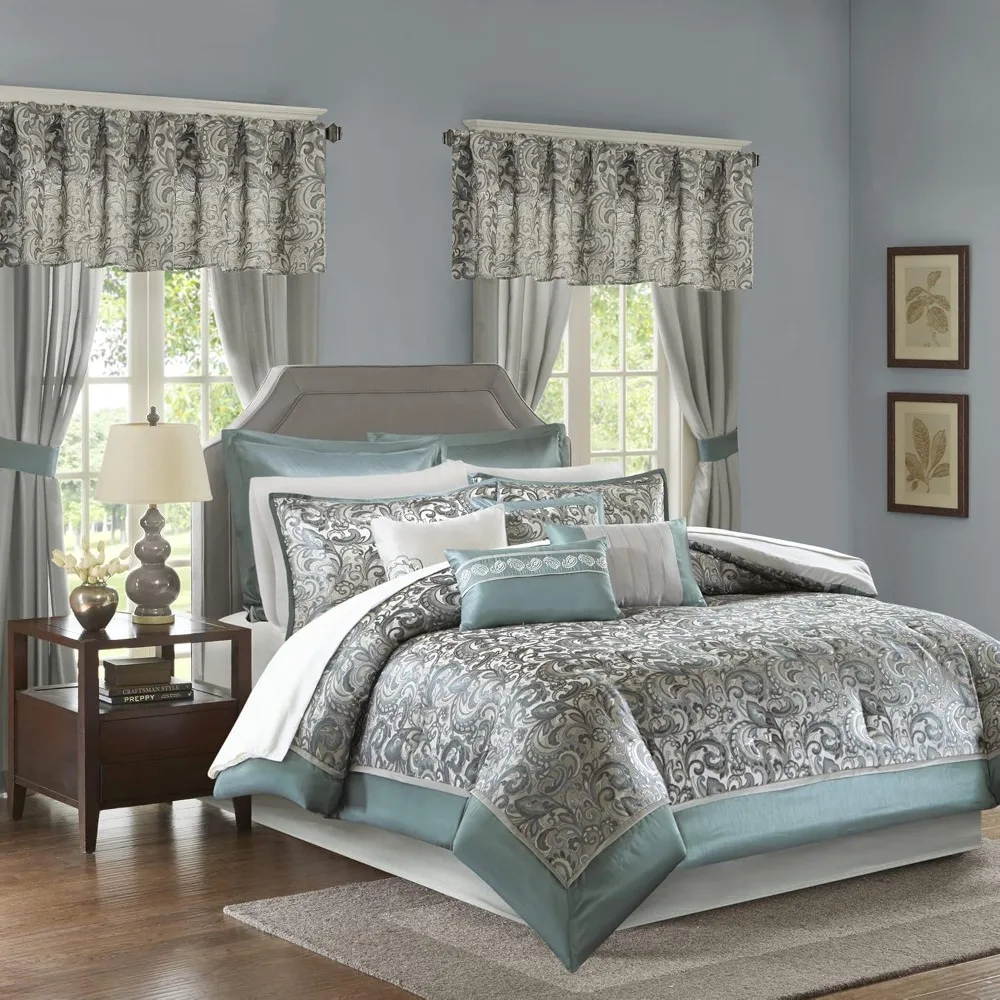
Making Your Selection: Final Considerations
When deciding between traditional silk and vegan alternatives, several key factors should guide your choice:
Personal Values
Your stance on animal welfare may be the deciding factor. If avoiding animal products is a priority, the various plant-based vegan alternatives offer excellent options without compromising significantly on luxury or performance.
Environmental Priorities
Consider which environmental factors matter most to you—water usage, chemical processing, biodegradability, or overall carbon footprint. Traditional silk and different vegan alternatives each have their own environmental profiles, with materials like Tencel offering particularly strong sustainability credentials.
Budget Considerations
Traditional silk typically commands premium prices due to its labor-intensive production process. Many vegan alternatives offer more accessible price points while still providing luxury-level comfort and appearance.
Performance Requirements
Think about which specific properties matter most for your intended use. If temperature regulation is paramount, silk or Tencel might be ideal. If you prioritize easy care, many vegan alternatives offer advantages over traditional silk.
Care and Maintenance
Consider how much maintenance you’re willing to perform. Traditional silk often requires more delicate care, while many vegan alternatives can withstand standard machine washing.
Longevity Expectations
If you’re looking for an heirloom-quality investment, high-quality silk with proper care can last for generations. Many plant-based vegan alternatives also offer excellent durability, while synthetic options may have shorter useful lifespans.
Remember that there’s no universally “best” choice—the right selection depends entirely on your individual priorities and needs. Fortunately, with the wide range of silk bedding alternatives available today, you don’t need to compromise significantly on luxury, performance, or ethics regardless of which direction you choose.
At Sanctuary Soft, we’re committed to offering exceptional options in both traditional silk and premium vegan alternatives, ensuring that every customer can find their perfect match for transforming ordinary sleep into extraordinary luxury.

